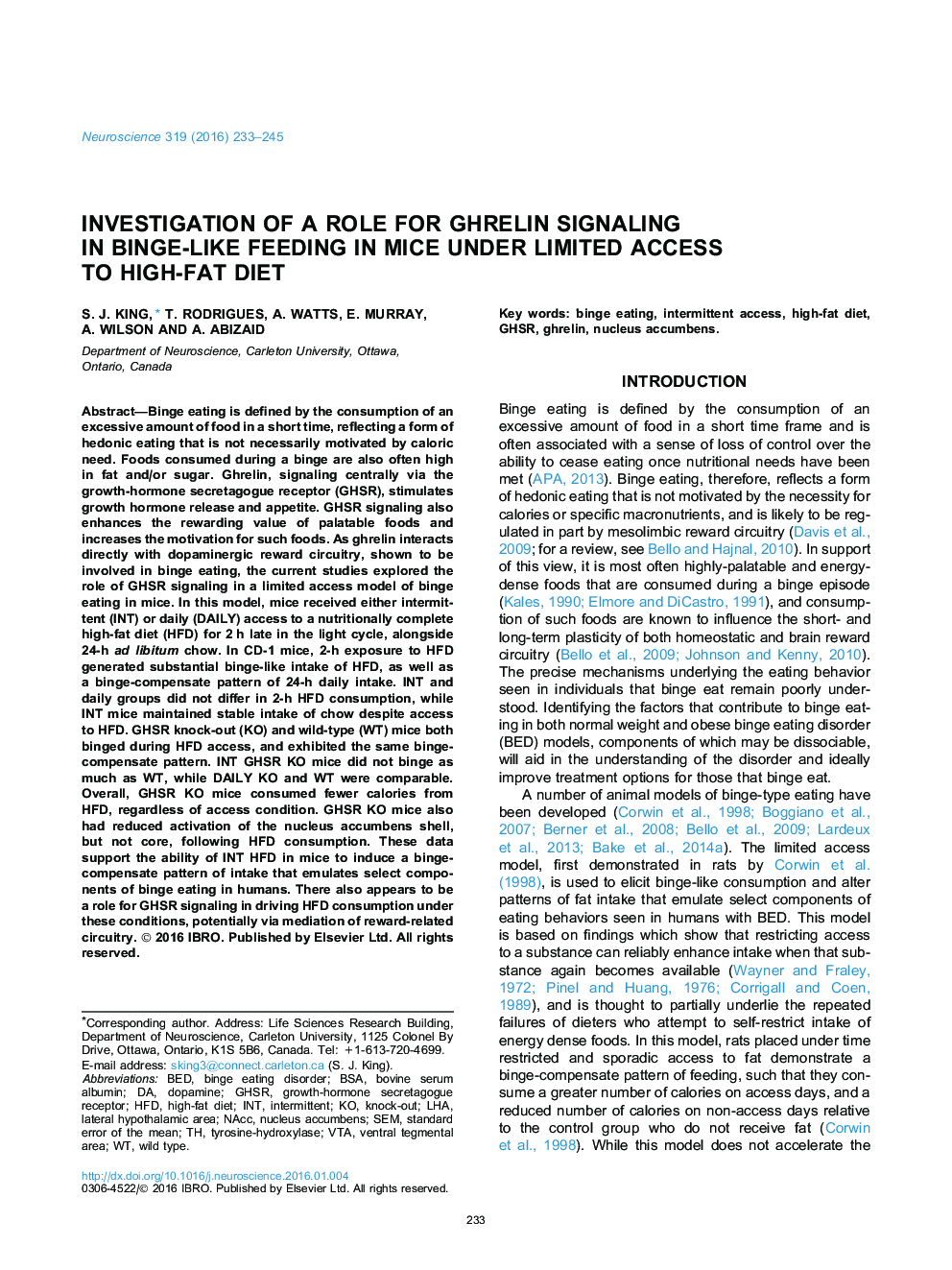| کد مقاله | کد نشریه | سال انتشار | مقاله انگلیسی | نسخه تمام متن |
|---|---|---|---|---|
| 6271347 | 1614757 | 2016 | 13 صفحه PDF | دانلود رایگان |
- Mice given limited and intermittent access to a high-fat diet exhibit binge-like behavior.
- GHSR knock-out mice consume less fat when access becomes less predictable.
- GHSR knock-out mice show reduced c-Fos in the nucleus accumbens following high-fat diet.
Binge eating is defined by the consumption of an excessive amount of food in a short time, reflecting a form of hedonic eating that is not necessarily motivated by caloric need. Foods consumed during a binge are also often high in fat and/or sugar. Ghrelin, signaling centrally via the growth-hormone secretagogue receptor (GHSR), stimulates growth hormone release and appetite. GHSR signaling also enhances the rewarding value of palatable foods and increases the motivation for such foods. As ghrelin interacts directly with dopaminergic reward circuitry, shown to be involved in binge eating, the current studies explored the role of GHSR signaling in a limited access model of binge eating in mice. In this model, mice received either intermittent (INT) or daily (DAILY) access to a nutritionally complete high-fat diet (HFD) for 2Â h late in the light cycle, alongside 24-h ad libitum chow. In CD-1 mice, 2-h exposure to HFD generated substantial binge-like intake of HFD, as well as a binge-compensate pattern of 24-h daily intake. INT and daily groups did not differ in 2-h HFD consumption, while INT mice maintained stable intake of chow despite access to HFD. GHSR knock-out (KO) and wild-type (WT) mice both binged during HFD access, and exhibited the same binge-compensate pattern. INT GHSR KO mice did not binge as much as WT, while DAILY KO and WT were comparable. Overall, GHSR KO mice consumed fewer calories from HFD, regardless of access condition. GHSR KO mice also had reduced activation of the nucleus accumbens shell, but not core, following HFD consumption. These data support the ability of INT HFD in mice to induce a binge-compensate pattern of intake that emulates select components of binge eating in humans. There also appears to be a role for GHSR signaling in driving HFD consumption under these conditions, potentially via mediation of reward-related circuitry.
Journal: Neuroscience - Volume 319, 5 April 2016, Pages 233-245
